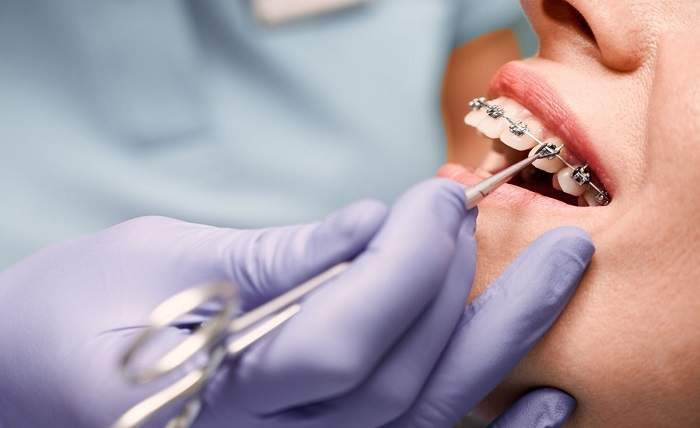
Dental health is a cornerstone of overall well-being, and it’s never too early to start considering how to nurture it. Each dental milestone is crucial, especially during childhood, when the stages of development can dictate future oral health. Early intervention in orthodontics—often termed “interceptive orthodontics”—is a proactive approach that can correct and prevent issues as children’s teeth and jaws are developing. Understanding this facet of dental hygiene not only mitigates the risk of more complex problems later but also instils a comprehensive approach to a child’s dental care.
The Importance of Early Dental Visits
The NHS recommends that children have their first dental check-up by the age of one. This early visit is not just a formality; it provides an opportunity for professional insights into the child’s dental development. Dentists can assess the alignment of teeth, the positioning of the jaw, and any potential issues with spacing. This holistic view of a child’s mouth can often reveal underlying problems that may not be immediately apparent to parents.
During these early visits, parents might receive expert advice on early dental correction, including the importance of regular brushing, dietary choices that affect teeth, and the timing of dental visits. Regular check-ups can pave the way for smoother transitions into adolescence, potentially avoiding the need for more intensive orthodontic procedures down the line.
Common Dental Issues in Children
Identifying common dental issues early can significantly influence correction methods.
- Crowding: When teeth don’t have enough space to come in properly, it can lead to crookedness or misalignment.
- Overbite & Underbite: These conditions can result from a discrepancy between the size of the jaw and the size of the teeth.
- Crossbite: This occurs when teeth are misaligned when the jaws are closed, potentially leading to jaw discomfort.
Recognising these issues as soon as they arise allows for timely interventions. Early treatment, ideally during the mixed dentition phase (when both baby and adult teeth are present), can simplify the correction needed later.
Types of Early Orthodontic Interventions
Interventions can vary depending on the specific issue identified. Some common techniques include:
Space Maintainers
These devices help keep space open for adult teeth that have not yet erupted. If a child loses a baby tooth prematurely, a space maintainer ensures the adjacent teeth don’t shift into that space, which could lead to future misalignment.
Expanders
Palate expanders can help widen the upper jaw to create more space for teeth and adjust the bite. If a child is found to have a narrow upper jaw, using an expander early can prevent future complications.
Bracing Options
For children with more severe misalignments, early braces can harmonise teeth while the jaw is still developing. Phase-one orthodontics, which involves the use of these early braces, can set the foundation for later comprehensive treatment.
The Benefits of Early Intervention
The advantages of early dental correction extend beyond aesthetics. Informed parents and children may experience several benefits:
- Reduced Treatment Time: Early intervention usually means that orthodontic work, if needed, can be completed in a shorter timeframe.
- Lower Costs: Less complex issues often translate into reduced overall treatment costs.
- Improved Oral Hygiene: Correct alignment of teeth makes it easier to maintain oral hygiene, thus preventing decay and gum disease.
Moreover, a child’s self-esteem can be positively affected by an early intervention that leads to a healthy smile. Often, children are more self-conscious about their teeth if they are crooked or misaligned, which can impact social interactions.
When to Seek Help
Parents should be observant of their children’s dental development. If you notice problems like the ones mentioned previously—crowding, bite issues, or spacing problems—it’s wise to consult an orthodontist. This is especially true if family history suggests a predisposition to dental issues.
In this phase, specialists typically employ various diagnostic tools, including X-rays and physical examinations, to configure a tailored treatment plan. Collaborating with a qualified orthodontist ensures that your child receives the most appropriate care at the right time.
Looking to the Future
The myth that orthodontic treatment is solely for adolescents is gradually being dispelled. With myriad advancements in dental technology, introducing interventions during childhood has become a successful norm. Early correction not only builds a strong foundation for oral health but also equips your child with the necessary tools for a confident, healthy adulthood.
In conclusion, paying attention to the state of your child’s dental health from a young age is invaluable. Through proactive strategies like early dental correction, it is possible to mitigate future orthodontic issues, ensuring a seamless transition into adulthood. For more detailed insights and information, consider seeking out expert advice on early dental correction. Understanding the nuances of interceptive orthodontics can empower you to make informed decisions about your child’s dental health journey.
The proactive steps you take today can help avoid extensive, expensive treatments in the future. Remember, the path to a bright smile often begins with simple awareness and early action.




